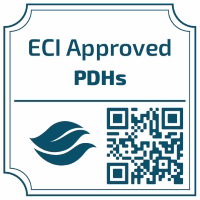Back
Claim Credit Verification Code: 2034
30 Minute Case Study
Erosion and Sediment Control
Use of Plant Based Dust Control in Reducing Fugitive Dust Emissions
Thursday, February 27, 2025
3:50 PM – 4:20 PM ET
Location: E11C
CE: .5 PDH
Level of Presentation: Intermediate

Danny Reynaga, CPESC, QSD
Western Regional Business Manager
Profile Products
Cardiff by the Sea , California, United States
Presenter(s)
Fugitive dust from mining, construction and commercial projects not only raises maintenance costs and hampers productivity, but also poses significant risks to the environment and worker health. Plant-based dust control products offer a biobased solution that tackles these dust emission challenges while minimizing water usage and application frequency. These products are an environmentally friendly and sustainable alternative to other dust control products. They mitigate dust through increased wettability and water reduction, providing a binding effect on soil particles.
Full Abstract: Within this presentation, there will be a basic overview of what plant-based dust control is and the advantages that stem from using this type of fugitive dust control over alternative methods.
The Environmental Protection Agency defines fugitive dust as “particulate matter that is generated or emitted from open air operations”. The particulate matter that makes up fugitive dust has the potential to not only be an environmental problem but also a public health risk. It can be comprised of sediment from roadways and construction sites, but also toxic particles such as mine tailings and dried chemical residue from factories. Fugitive dust can be costly and a hazard for jobsites, sometimes resulting in fines from environmental, regulatory and community agencies.
There are many forms of dust control, but there can be risk associated with some methods. The practice of continuously applying water increases the usage of vital resources, while the use of salt-based or synthetic polymer alternatives may degrade soil health, pollute waterbodies, and/or contaminate ground water. Plant-based dust control products are an environmentally friendly dust control solution that are biodegradable and engineered for utilization in conventional water trucks and hydroseeders. These products are non-toxic, will not impede vegetation establishment, and can be dyed with a temporary tracer dye for metering.
Overall, plant-based dust control products offer an environmentally friendly dust control solution providing an ample number of benefits compared to other control methods. By controlling fugitive dust, contractors, mines, and transportation operations can better meet environmental, regulatory and community requirements and reduce profit loss on projects. Several case studies will be used to show the success of plant-based dust control in suppressing fugitive dust.
Full Abstract: Within this presentation, there will be a basic overview of what plant-based dust control is and the advantages that stem from using this type of fugitive dust control over alternative methods.
The Environmental Protection Agency defines fugitive dust as “particulate matter that is generated or emitted from open air operations”. The particulate matter that makes up fugitive dust has the potential to not only be an environmental problem but also a public health risk. It can be comprised of sediment from roadways and construction sites, but also toxic particles such as mine tailings and dried chemical residue from factories. Fugitive dust can be costly and a hazard for jobsites, sometimes resulting in fines from environmental, regulatory and community agencies.
There are many forms of dust control, but there can be risk associated with some methods. The practice of continuously applying water increases the usage of vital resources, while the use of salt-based or synthetic polymer alternatives may degrade soil health, pollute waterbodies, and/or contaminate ground water. Plant-based dust control products are an environmentally friendly dust control solution that are biodegradable and engineered for utilization in conventional water trucks and hydroseeders. These products are non-toxic, will not impede vegetation establishment, and can be dyed with a temporary tracer dye for metering.
Overall, plant-based dust control products offer an environmentally friendly dust control solution providing an ample number of benefits compared to other control methods. By controlling fugitive dust, contractors, mines, and transportation operations can better meet environmental, regulatory and community requirements and reduce profit loss on projects. Several case studies will be used to show the success of plant-based dust control in suppressing fugitive dust.
Learning Objectives:
At the conclusion of this presentation, attendees will:
- Distinguish between different types of dust control
- Define what fugitive dust is and when it needs to be contained to prevent sediment pollution
- Understand the cost, health risk and environmental hazards associated with fugitive dust

.jpg)


